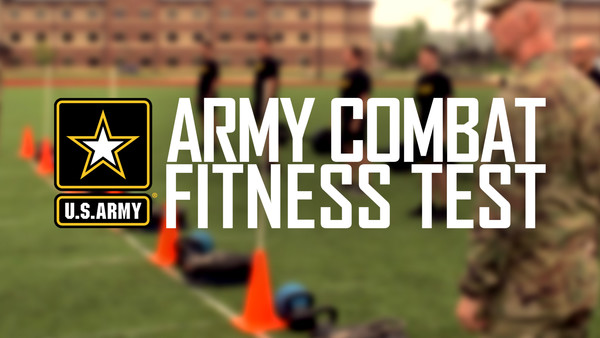A Speech That Hits Like a Safety Brief After Too Much Coffee
Good day Leaders, Secretary of War Pete Hegseth didn’t mince words in his recent address. He announced the end of the “Department of Defense” and the restoration of the Department of War.
The message was loud, unapologetic, and aimed straight at the military’s backbone: its leaders. For NCOs, the speech isn’t background noise—it’s a call to action. This isn’t just about new policies; it’s about a cultural reset.
Here’s the breakdown of what matters most, and how it impacts your role as an NCO.
1. Mission Reset: From Defense to Warfighting
The Secretary’s central point was clear: America’s military doesn’t exist to defend indefinitely—it exists to prepare for war and win wars.
The old saying, “those who long for peace must prepare for war,” is now the guiding philosophy of the War Department. The emphasis is not on reaction, but on preparation and dominance.
What this means for NCOs:
-
Training events aren’t “good enough” if they meet minimum standards—they must prepare troops for the chaos of actual combat.
-
Mission readiness isn’t a buzzword. It’s now the yardstick for success.
-
Leaders must adopt a wartime mindset, even in garrison.
💡 Discussion Point for NCODP: Ask your Soldiers if their current training feels like preparation for war—or just another checkbox.
2. Standards: The Foundation of Lethality
The most controversial part of the speech was the directive on standards. Hegseth announced that all combat MOS requirements will revert to the highest male baseline—uniform, uncompromising, and gender-neutral.
Add to that:
-
PT tests are mandatory twice a year for every rank.
-
Height and weight enforcement is back, across the force.
-
Daily PT is now non-negotiable—every Soldier, every duty day.
-
Grooming standards are strict. No more “beard culture,” long hair, or looking like you wandered in from a civilian campus.
For NCOs: This is where rubber meets road. Soldiers will look to you to enforce. You will set the tone. If you skip PT, they’ll skip PT. If you look sloppy, they will too. Leadership is personal example first, policy second.
3. Leadership: Personnel Is Policy
The Secretary hammered home one truth: good leadership is the decisive factor in war.
He redefined “toxic leadership.” Enforcing standards is not toxic; low standards are. The era of leaders being punished for doing their jobs is over.
Promotions will return to merit only. High performers will advance faster, and poor performers will exit sooner.
For NCOs:
-
Be competent, be consistent, and your Soldiers will trust you.
-
“Go along to get along” leaders will find themselves left behind.
-
Take ownership: if your formation isn’t ready, the accountability lands on your shoulders.
4. Culture: No More Walking on Eggshells
Hegseth declared war on “walking on eggshells” culture. For years, EO, MEO, and IG processes were seen as tools to sideline leaders enforcing standards. That’s changing.
His directives:
-
Frivolous and anonymous complaints will be eliminated.
-
Leaders regain authority to enforce discipline without fear of endless investigations.
-
Mandatory training will be cut back—less time on computers, more time training and maintaining.
For NCOs: This gives you freedom—but it also means you own the results. Soldiers will no longer have a free pass to cry foul when corrected. But if you’re lazy, unfair, or abusive, you won’t last long.
5. Training: Back to Lethality
Training is no longer about check-the-box requirements. The focus is lethality.
Changes include:
-
Basic training will return to being tough, disciplined, and even intimidating. Shark attacks are back, bunks will get tossed, and drill sergeants regain teeth.
-
Every Soldier a warfighter. Support MOSs are expected to maintain baseline combat skills.
-
Maintenance and ranges prioritized over endless CBTs.
For NCOs: Drill sergeants will shape the next generation harder. Line NCOs must keep that edge alive. If your Soldiers can’t fire, move, and communicate under stress, you’re failing them.
6. The Golden Rule Test
One of the most powerful moments in the speech was personal. The Secretary asked:
Would you want your own son or daughter in the formation you’re leading?
If the answer is no—or even “yes, but”—then your formation isn’t up to standard.
For NCOs: This test strips away excuses. It makes readiness personal. Lead as if your own child is wearing the uniform under your charge.
7. Discipline and Appearance Matter
From generals down to privates, physical fitness and professional appearance are non-negotiable. Fat generals, overweight Soldiers, and relaxed grooming were singled out as unacceptable.
The message is simple: if you don’t look like a warrior, the culture follows suit.
For NCOs: Be ruthless about the basics. PT. Height/weight. Uniforms. Haircuts. Discipline is contagious, but so is sloppiness.
Final Thoughts: What This Means for NCOs
The War Department’s new direction boils down to this: prepare for war, enforce standards, and build lethal formations.
As NCOs, we must:
-
Lead from the front. If you’re not fit, trained, and disciplined, your Soldiers won’t be.
-
Enforce standards without hesitation. High standards save lives. Low standards cost them.
-
Train and maintain like it’s life or death. Because it is.
-
Apply the Golden Rule Test. Would you want your kid in your formation? If not, fix it.
The Secretary’s final words captured it best: Move out and draw fire. The era of soft edges is over. The War Department is back, and the responsibility falls squarely on the shoulders of NCOs to make sure our formations are ready to fight and win.
Leaders take this time to talk to your NCO’s and get the pulse of your Unit.
-
Share with your Soldiers. Use this as a discussion starter in your squads and platoons.
-
Print for NCODP. Bring it into your next NCO professional development session and challenge your leaders: Are we living up to these standards?
-
Lead the conversation. Don’t wait for guidance from higher—make readiness personal in your formation.




